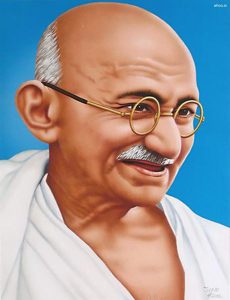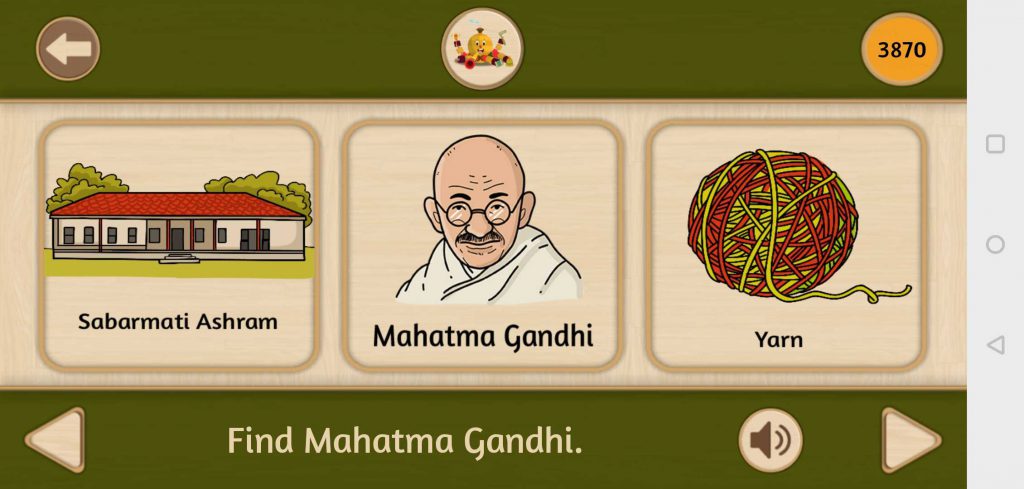
01 Oct Why Your Kid Should Know About Mahatma Gandhi?
I was helping my daughter study for a general knowledge school test one night and one of the questions was, “Who is known as the father of the nation?”. My daughter was a fast learner and of course, she excitedly answered, “Mahatma Gandhi!”. I was proud of her but also curious whether she knew who Mahatma Gandhi actually was and all the great work that he had done.
So, after all the revisions were done, I asked her, “Do you know who Mahatma Gandhi was?” To this, my daughter looked at me perplexed and replied, “I just told you who he was Mummy. Have we not finished studying?” I smiled at her innocence and sat down next to her. My daughter was still confused. She wondered why I was acting so strange. Then I told her, “Yes Maya, we have finished studying, and yes he is the Father of the Nation. But, there is more to him than just the name.”
“There is?” replied Maya to my answer. I could understand her confusion since the school teachers only taught what was within the syllabus. But, I felt that now was the right time for Maya to know about our country’s rich history. Also, I felt that the teachings of Mahatma Gandhi could provide kids with valuable life lessons like positivity, kindness, and forgiveness to name a few. So, I smiled at Maya and started telling her about the Father of our nation like this.
Who was Mahatma Gandhi?

Our Father of the Nation, Mahatma Gandhi’s real name was Mohandas Karamchand Gandhi and he was the youngest amongst his four siblings. In his time child marriage was prevalent and he was married at the age of 13, to Kastur Kapadia, later known as Kasturba Gandhi. Mahatma Gandhi, unlike what his personality was in the later years of his life, was a weak student and hated sports. The subject he hated the most was Geography as he found it difficult to understand. On the contrary, he loved reading the Hindu scriptures and began to idolise Raja Harishchandra, the king who would always tell the truth.
Mahatma Gandhi’s Struggle
After completion of his initial education, Mahatma Gandhi moved to London to study law at the University College of London, in the year 1888. After this, he returned to India to practice but seeing no results, he moved to South Africa. In those days, discrimination of colour and race was a big issue. Hence on many occasions, Mahatma Gandhi had to face the brunt of it because of his dark-coloured skin.
In fact, the rate of discrimination was so high that he was once thrown out of a full bus just because he refused to vacate a seat on the bus for a white man. Not just that, but Gandhi was also refused any room in the hotels of South Africa just because of his dark complexion. At one point in time, Mahatma Gandhi was even ordered to remove his turban by a court magistrate as well. But, all these incidents did not break his spirit. Instead, it made him stronger and he took a pledge to fight against inequality and to develop political ideas that could help people, who were looked down upon.
Mahatma Gandhi’s School and His Teaching Principles

Img Credit: www.gandhitour.info
While he was in South Africa, Mahatma Gandhi set up an ashram in Phoenix, where he started a school for children. Gandhi’s teaching principles were unlike other schools; he believed more in an education system that could not only improve a child’s brain but his/her heart as well.
Gandhi disliked the examination system that was used in most education systems and so he formed a different system for judging a student’s abilities. He never discriminated among the boys in school and to create a balance, he would often praise the boys with low marks for the efforts they made and scolded the one who had high marks. The ideology behind this unusual practice by Mahatma Gandhi was to eliminate any comparisons among students based on the marks awarded to them.
He further explained that his aim was to find out the progress of each of his students and how much they had learnt. He did not find it reasonable that a clever student competed with someone who had a slower learning curve. This would not produce results but fill the clever students with vain pride and in the process, they would grow dull and make fewer efforts to learn. Gandhi also added that “The student who does his/her best and works hard will always do well and so I praise him/her.”
Hence, Mahatma always kept a close vigil on students who performed well so that they would never stop working hard. Gandhi continually stressed this to his students. So, if a student, who was a low learner, worked hard and did well, Mahatma Gandhi was full of praise for them.
Today Mahatma Gandhi continues to live on in our hearts and minds through his teachings which included cleanliness, simple living, performing the right actions, and much more. So, this Gandhi Jayanti, what is it that you are going to teach your children. How about telling them the story of the Father of our independent Nation with the help of OckyPocky. One exclusive class is dedicated to teaching your kid all about him!
Here’s a glimpse:

Surely a great way to teach about Mahatma Gandhi and your children will be glad to know more about their country’s history.

No Comments